Cambridge University Library joins Google Arts and Culture
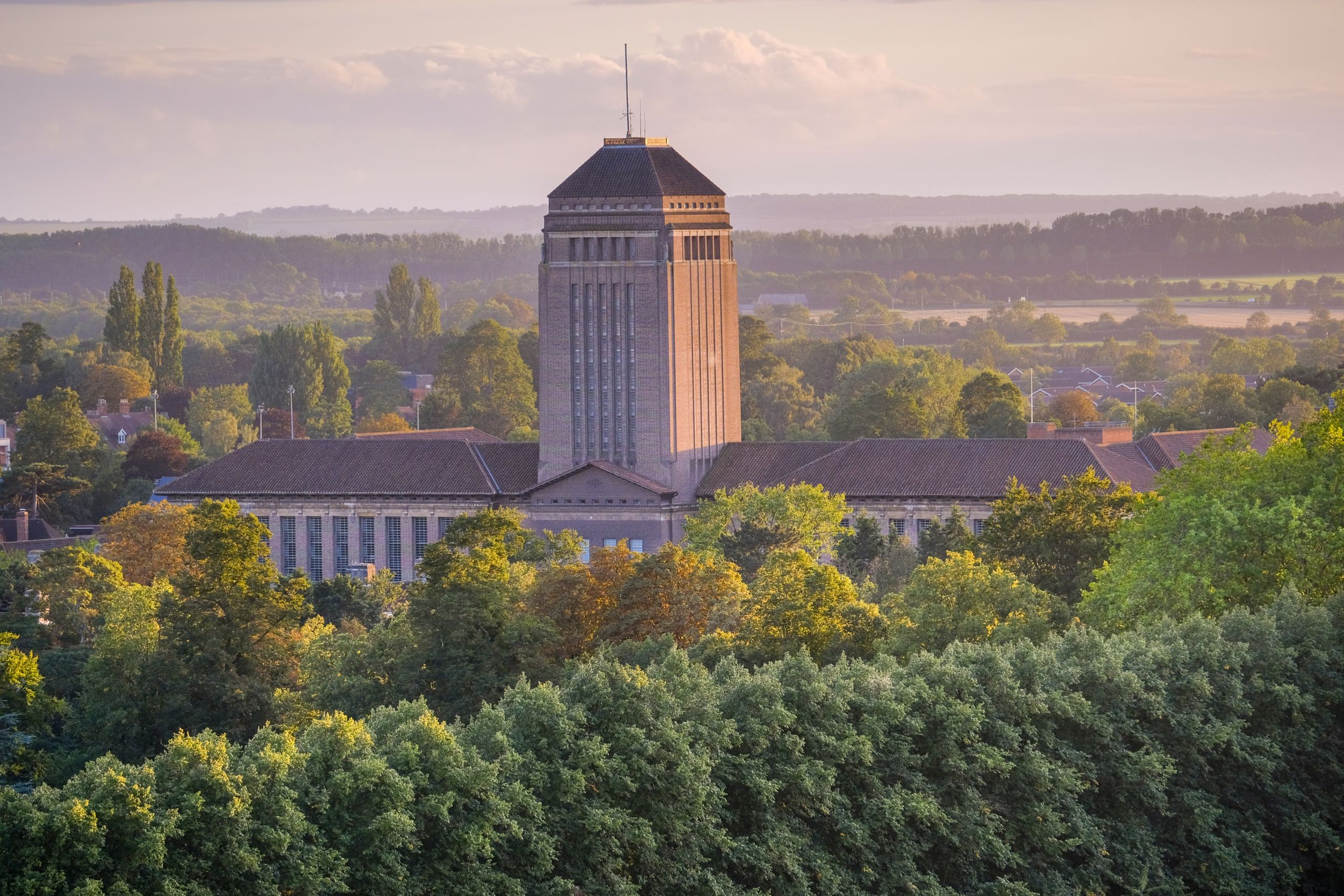
From today (Monday 31 August), audiences across the globe will be able to explore some of the treasures of Cambridge University Library on the Google Arts and Culture platform.
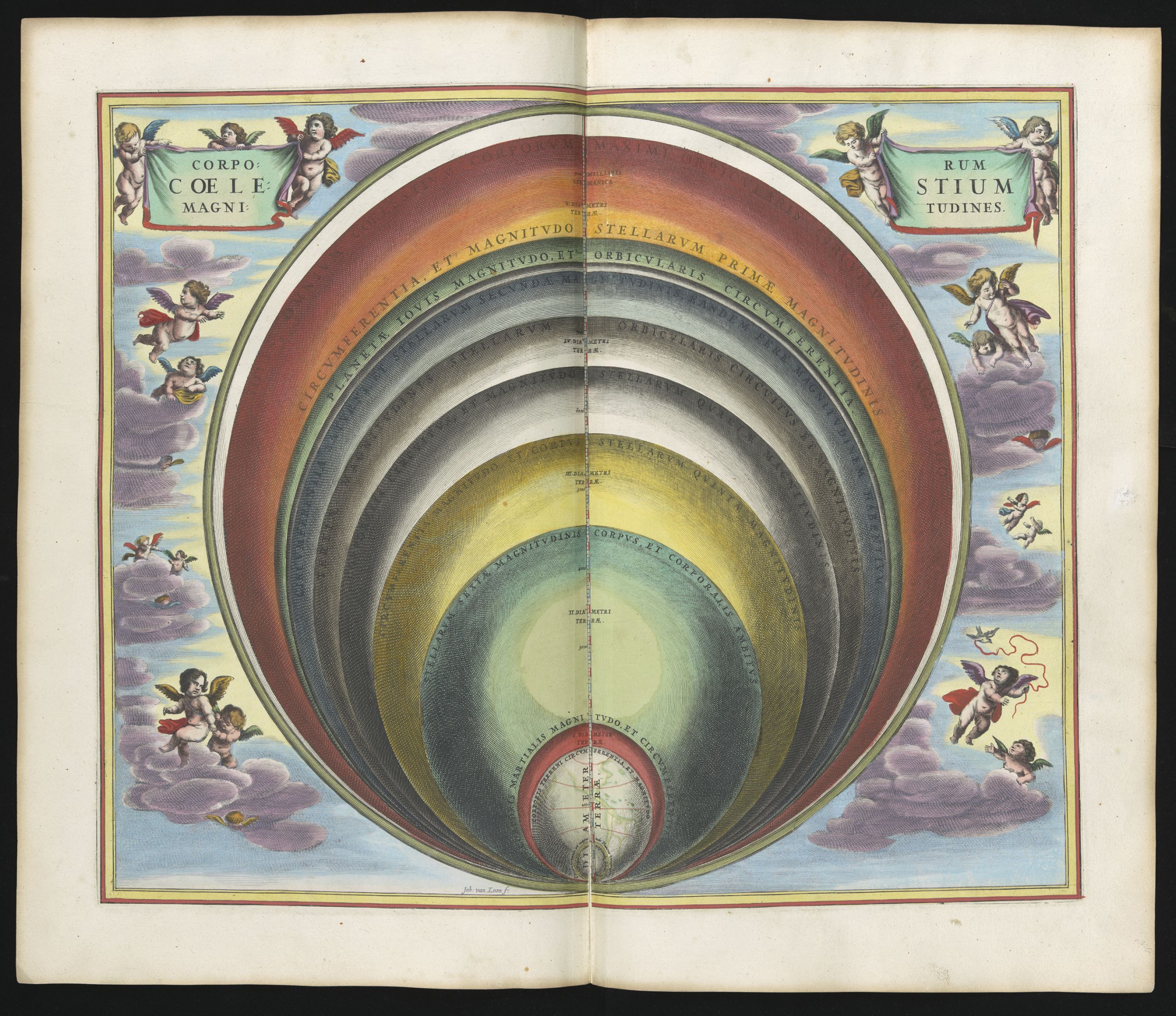
Andreas Cellarius, Harmonia macrocosmica (1661) (Atlas.3.66.1). Image copyright: Cambridge University Library
Andreas Cellarius, Harmonia macrocosmica (1661) (Atlas.3.66.1). Image copyright: Cambridge University Library
Cambridge University Library (UL) is the first institution of the University of Cambridge to join the platform and joins organisations such as the British Museum, Rijksmuseum and the White House, among many others, who share their collections freely, and openly, with the world.
The UL is one of the oldest university libraries in the English-speaking world, and is home to nearly ten million books, maps, manuscripts and curious objects spanning more than 4,000 years of human history, in more than 2,000 languages.
Allowing users to zoom in on objects in great detail, the images and ‘stories’ reveal the fascinating narratives behind unique objects such as the earliest Chinese book printed using the technique of douban, a printing method using different colours of ink applied to woodcut blocks, or Sir Isaac Newton’s undergraduate notebooks from his time at Trinity College, Cambridge.
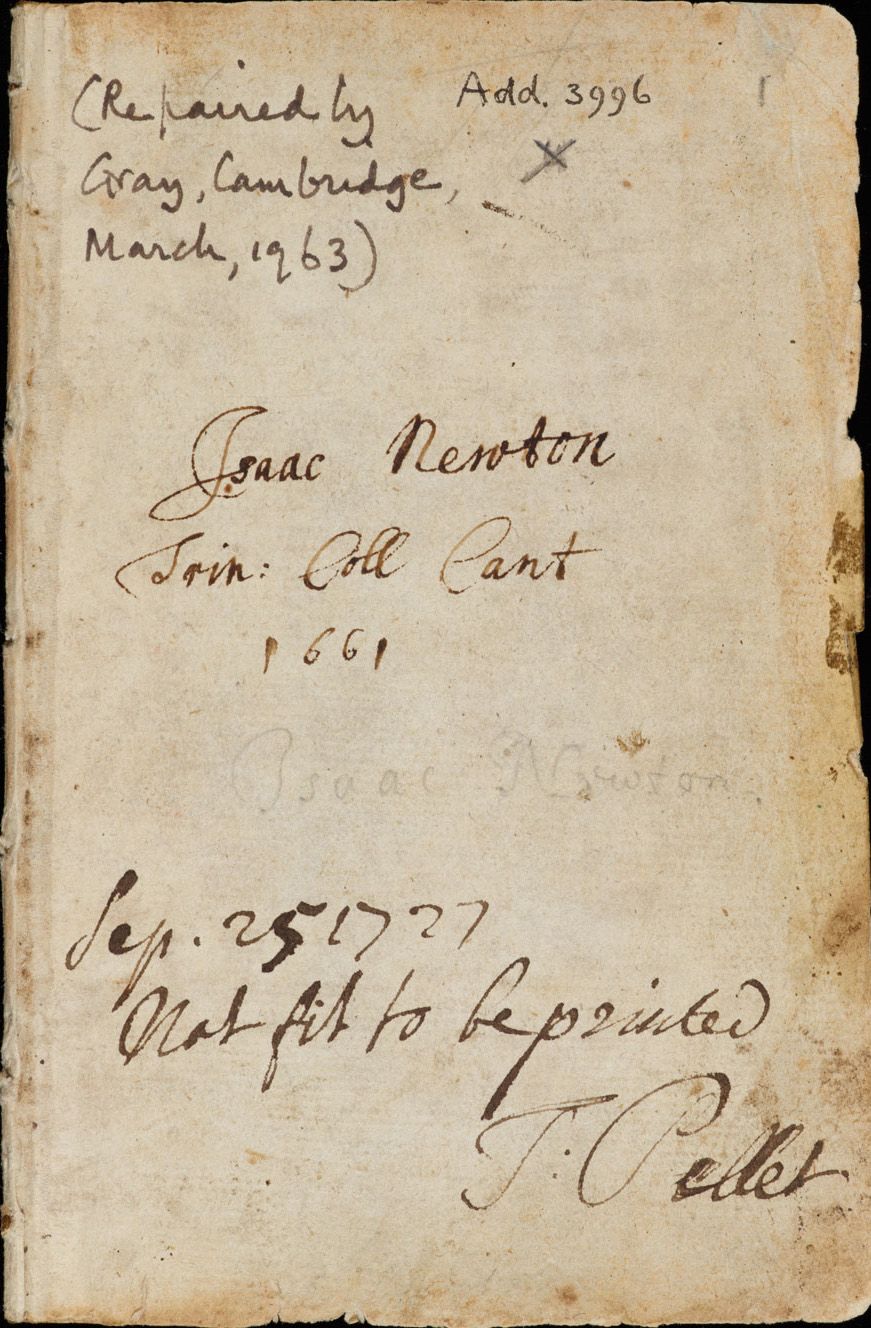
Notebook used by Sir Issac Newton while he was a student at Trinity College, Cambridge. Image copyright: Cambridge University Library
Notebook used by Sir Issac Newton while he was a student at Trinity College, Cambridge. Image copyright: Cambridge University Library
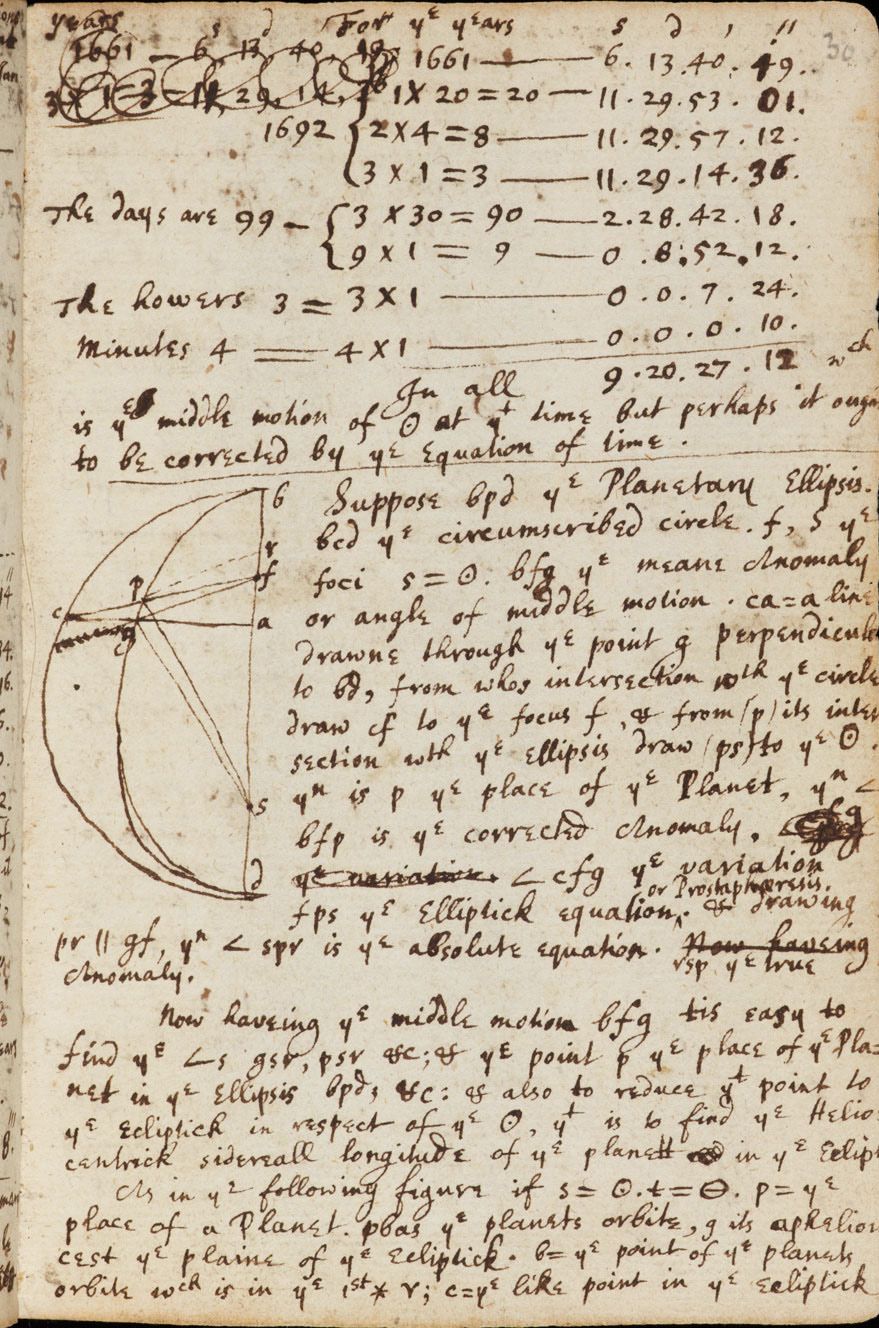
Notebook used by Sir Issac Newton while he was a student at Trinity College, Cambridge. Image copyright: Cambridge University Library
Notebook used by Sir Issac Newton while he was a student at Trinity College, Cambridge. Image copyright: Cambridge University Library
The ‘Treasures of Cambridge University Library’ story brings together manuscripts, books and other objects of singular importance, collected throughout the library’s 600-year history.
Some are unique, many have significant historical importance, and others are simply beautiful objects in their own right.

The 'Perfection of Wisdom in Eight Thousand Lines'. Image copyright: Cambridge University Library
The 'Perfection of Wisdom in Eight Thousand Lines'. Image copyright: Cambridge University Library
Among the objects of historical importance is the oldest written object in the library’s collection, a Sumerian clay tablet dating from 2200BCE.
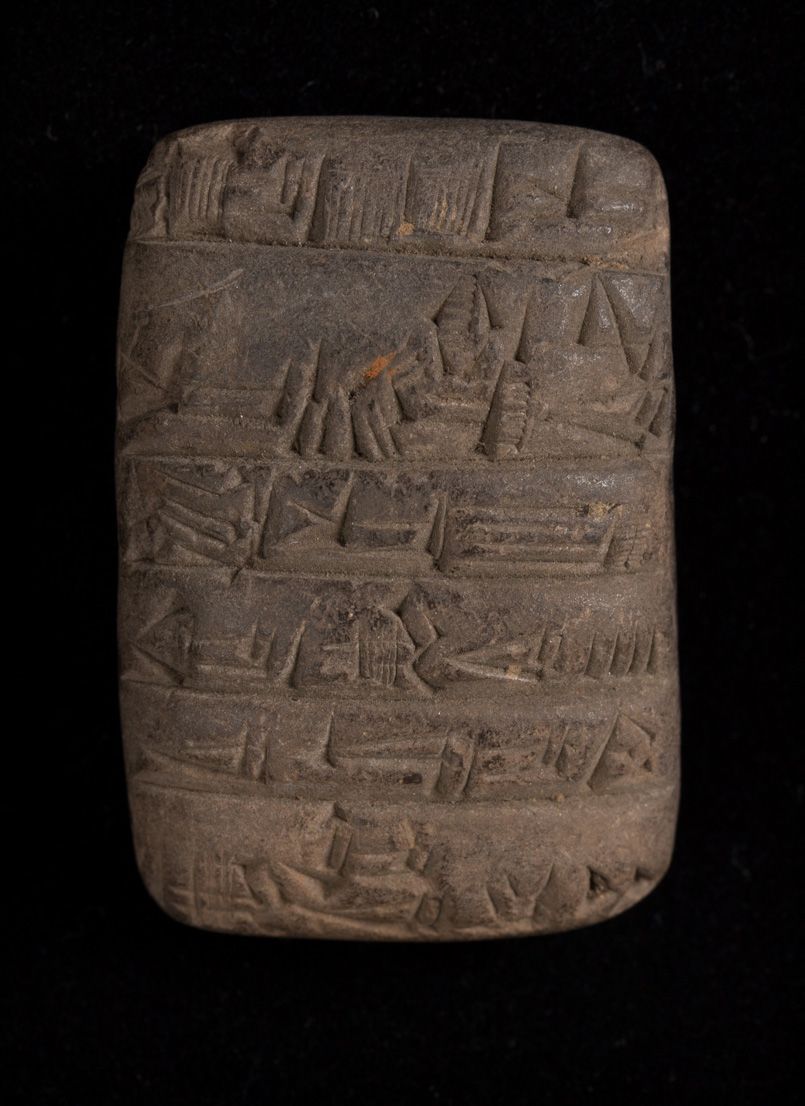
Sumerian clay tablet (MS Doc. 829). Image copyright: Cambridge University Library
Sumerian clay tablet (MS Doc. 829). Image copyright: Cambridge University Library
Thought to have been written in an administrative office by a Sumerian scribe, the tablet records the transaction of jars of pig fat between two men. The tablet uses cuneiform, a wedge-shaped script produced using a reed stylus.
Users are able to follow the advances in communications from the Sumerian clay tablet, to the first Western European book to be printed using movable type, the Gutenberg Bible, to mass-produced paperback books, such as the Penguin paperbacks of the late 1930s.
Printed around 1455, some 180 copies of the Gutenberg Bible were produced by Johann Gutenberg and Johannes Fust with a method of printing that revolutionised book production.
Each copy could be personalised for the buyer with hand-painted initials and borders.
Another work of outstanding historical importance is the fourth- or fifth-century Codex Bezae.
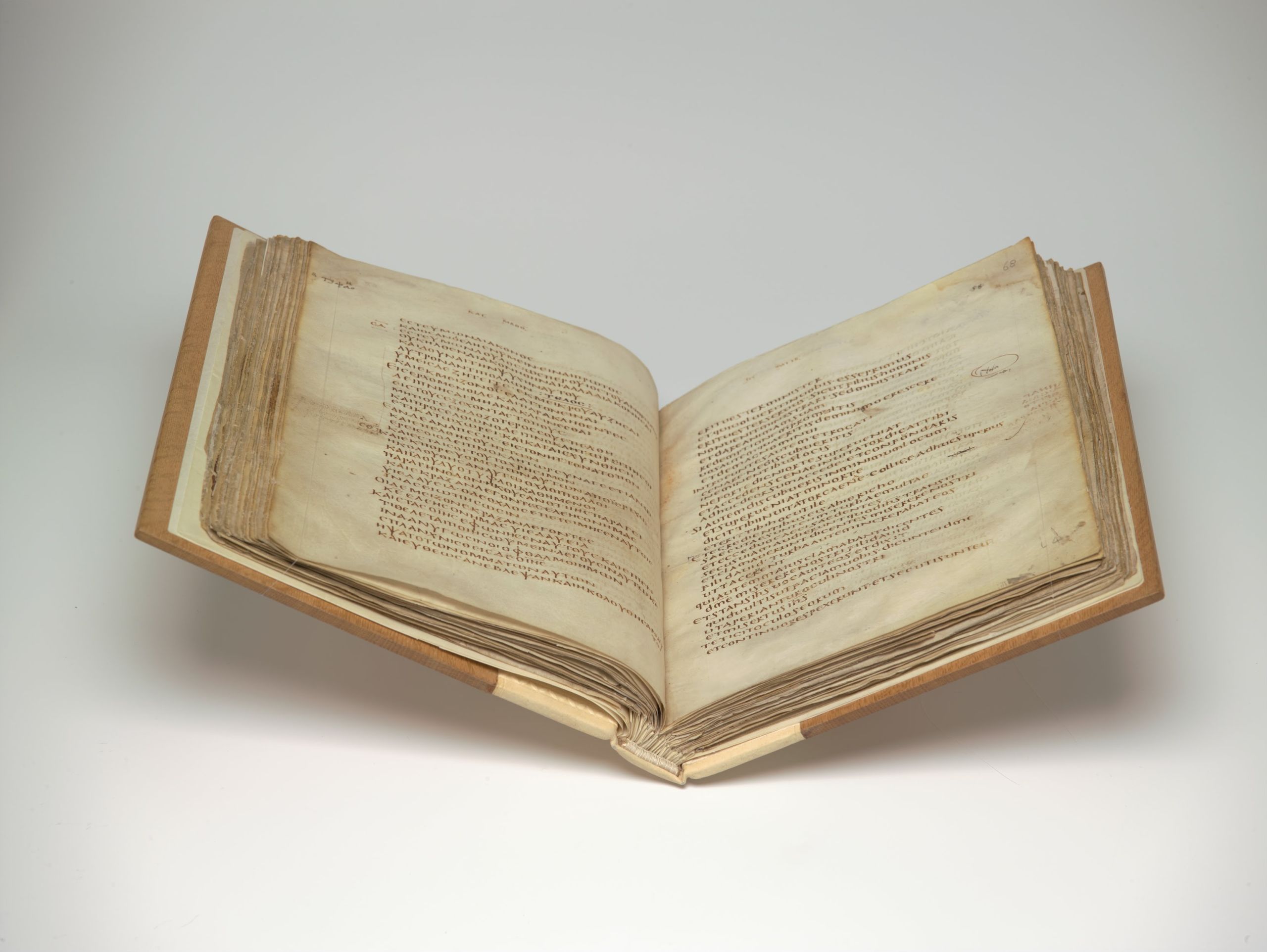
Codex Bezae (MS Nn.2.41). Image copyright: Cambridge University Library
Codex Bezae (MS Nn.2.41). Image copyright: Cambridge University Library
Consulted by the Council of Trent (the 19th ecumenical council of the Catholic Church), it is one of the most important manuscripts of the New Testament, and was presented to Cambridge in 1581 by Reformer Theodore de Bèze.
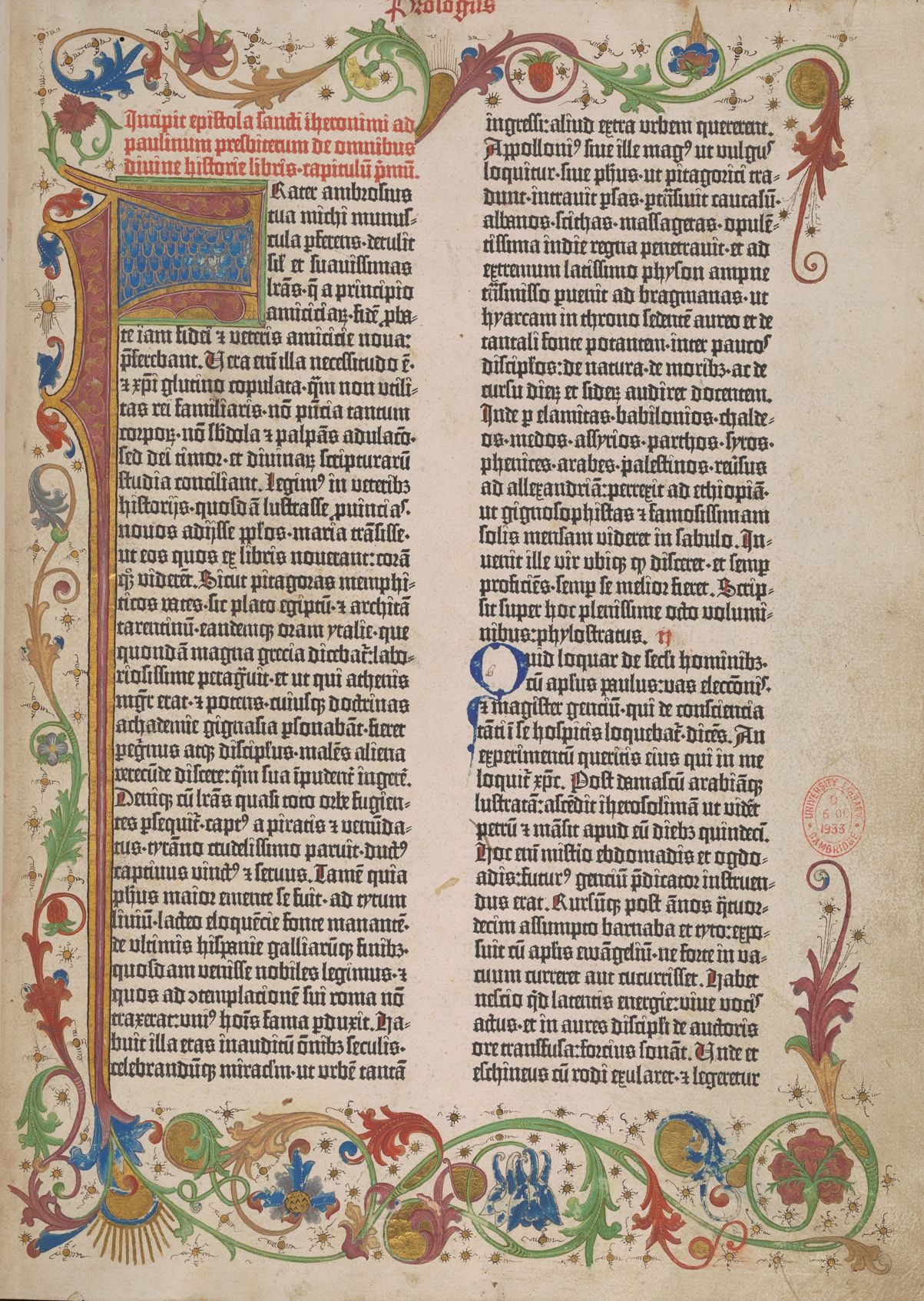
Gutenberg Bible (Inc.1.A.1.1[3761.1-2]). Image copyright: Cambridge University Library
Gutenberg Bible (Inc.1.A.1.1[3761.1-2]). Image copyright: Cambridge University Library
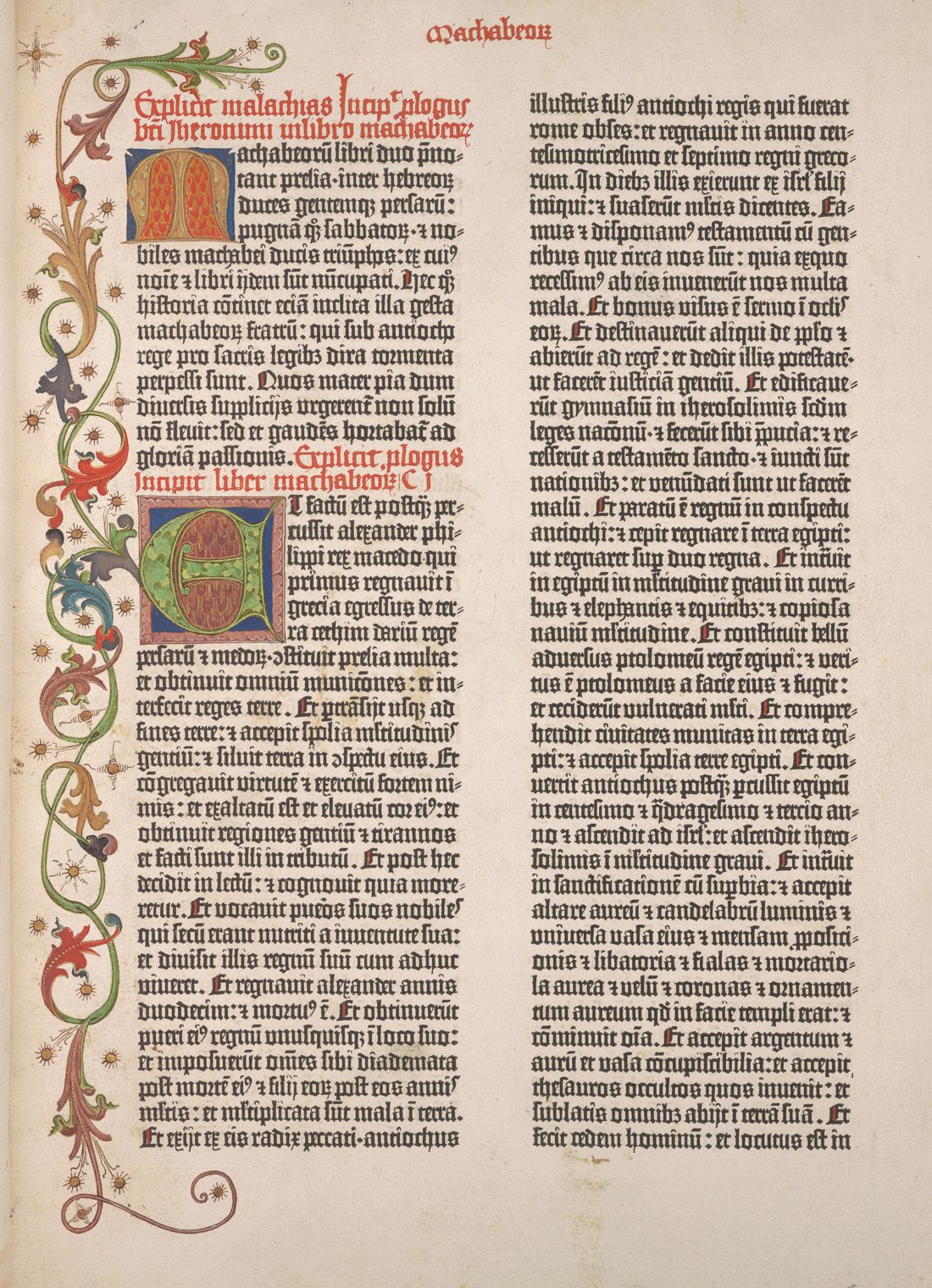
Gutenberg Bible (Inc.1.A.1.1[3761.1-2]). Image copyright: Cambridge University Library
Gutenberg Bible (Inc.1.A.1.1[3761.1-2]). Image copyright: Cambridge University Library
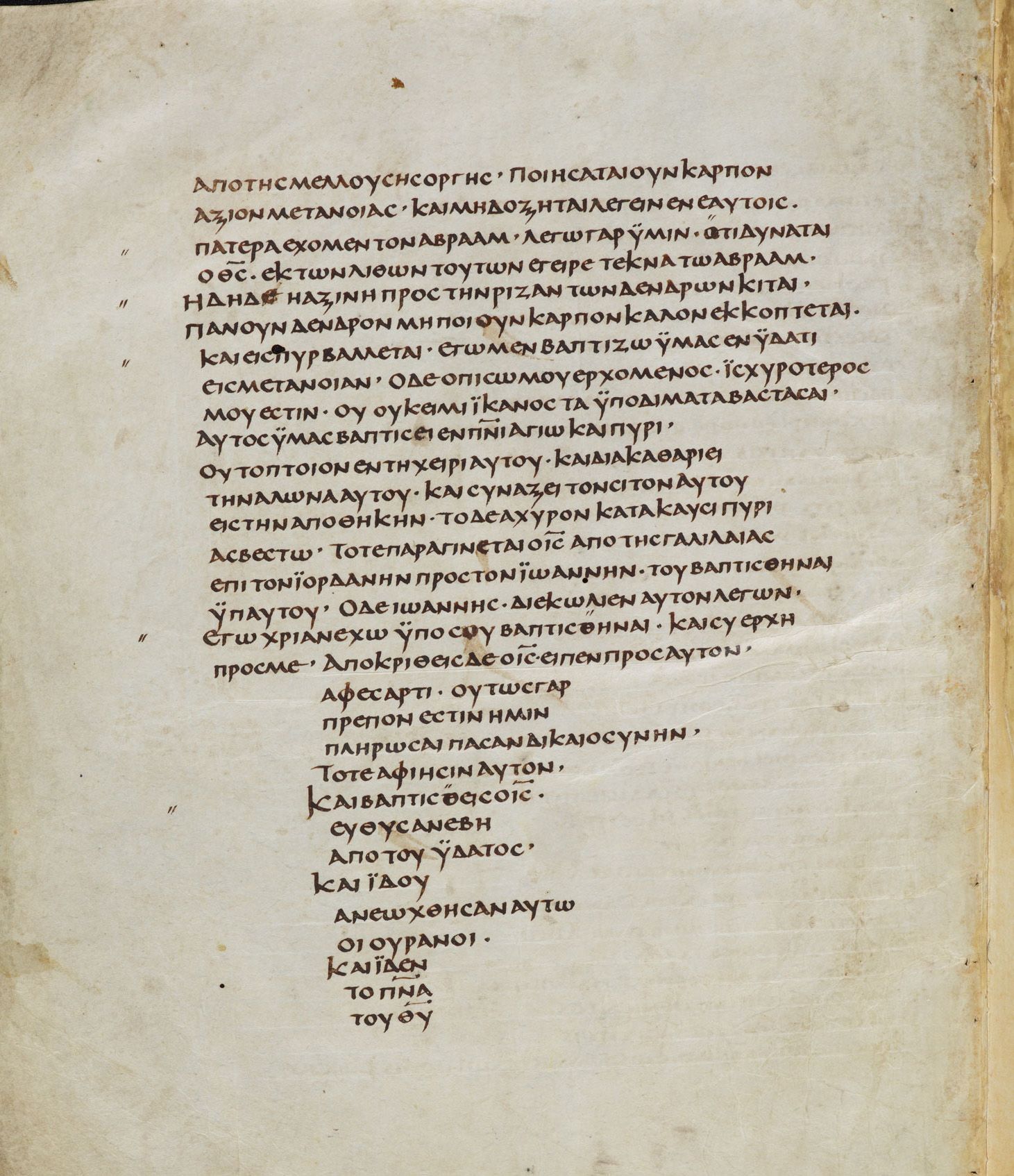
Codex Bezae (MS Nn.2.41). Image copyright: Cambridge University Library
Codex Bezae (MS Nn.2.41). Image copyright: Cambridge University Library
One of the stand-out objects in the library’s collection is a hand-coloured copy of Vesalius’ Epitome, a companion to his De humani corporis fabrica, published in 1543, and one of the most important books in the history of anatomy.
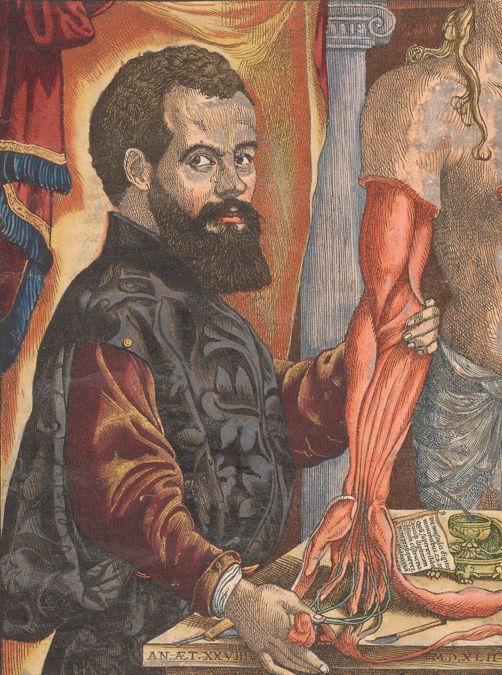
In this striking self-portrait, Vesalius shows his skills in dissecting the human hand. Image copyright: Cambridge University Library
In this striking self-portrait, Vesalius shows his skills in dissecting the human hand. Image copyright: Cambridge University Library
Vesalius used woodcuts of the human body to promote his idea that dissection was integral to the study of anatomy.
The frontispiece of Vesalius’ Epitome, shows Vesalius’s anatomy theatre. Image copyright: Cambridge University Library
The frontispiece of Vesalius’ Epitome, shows Vesalius’s anatomy theatre. Image copyright: Cambridge University Library
Google Arts and Culture users can also dive further into the teaching of anatomy with George Stubbs’ illustrations of the skeleton and musculature of the horse from 1766.
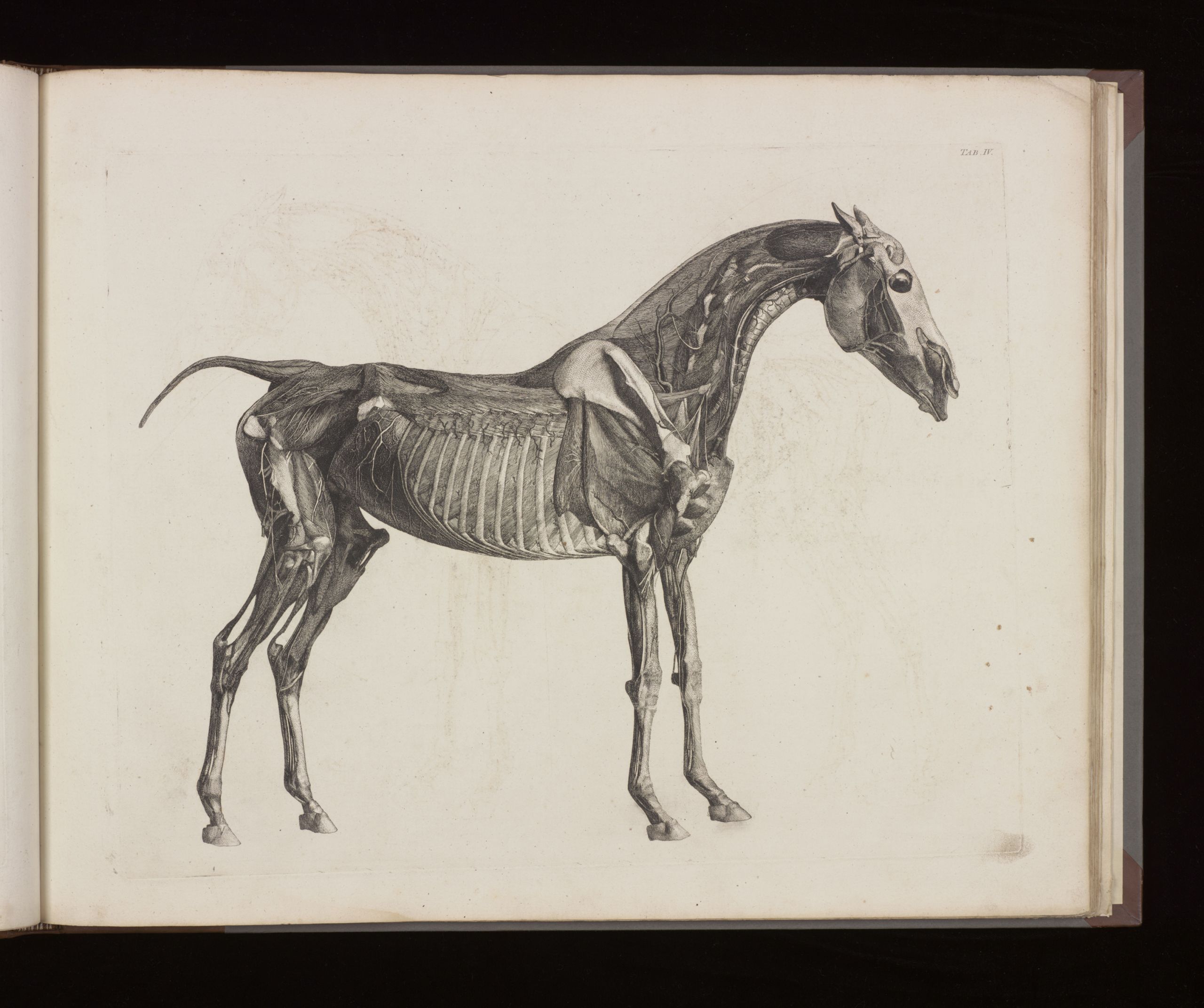
The anatomy of the horse, George Stubbs. Image copyright: Cambridge University Library
The anatomy of the horse, George Stubbs. Image copyright: Cambridge University Library
The partnership with Google Arts and Culture complements the availability of more than 50,000 objects already digitised and made freely available on the Cambridge Digital Library, which has recorded more than 20 million object views since its launch in 2011.
Cambridge University Library will continue to add more objects and treasures to the platform in the coming months and is expected to be joined by the Fitzwilliam Museum and other University of Cambridge institutions, illuminating the breadth and depth of collections held across the University.
Cambridge University Librarian Dr Jessica Gardner said: “Cambridge University Library is home to thousands of years of human history and is one of the world’s great research collections, drawing visitors, writers, academics and researchers from all over the world to engage with our unique collections”.
“From ancient historical records carved into clay, to beautifully illuminated and illustrated medieval manuscripts, to works illuminating the human body or the night sky above us, we are so pleased to begin sharing our collections on Google Arts and Culture.
“One of our driving principles is to freely and openly share our world-class collections with the world. With fewer people able to travel at the moment, our partnership with Google is a perfect example of bringing the Library to millions of enquiring minds across the globe, joining some of the world’s biggest and best-loved cultural institutions already on the platform," added Gardner.
Google Arts and Culture is a free online platform launched in 2011 through the Google Cultural Institute initiative. With six million objects to explore, the digital platform utilizes high-resolution image technology and enables users to virtually tour partner institutions’ galleries, explore physical and contextual information about artworks, and compile their own virtual collection

